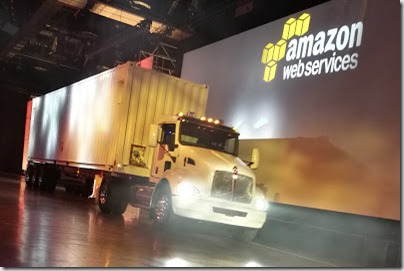This is a translation of an interview I gave to IsraelClouds (a meet the architect session).
Hello, my name is Maish Saidel-Keesing. I am a Cloud and DevOps architect at CyberArk in Petach Tikva. I have over 19 years experience in the compute industry. In the past I was a system administrator, managing Active Directory, Exchange and Windows servers. I have a lot of past experience with VMware systems - I wrote the first version of VMware vSphere Design and I have extensive knowledge of OpenStack (where I also participated in the OpenStack Architecture Design Guide). In recent years I have been working in the public cloud area (AWS and Azure) and I am also in the process of writing another book called “The Cloud Walkabout”, which was written following my experience with AWS.
What was the catalyst that made you interested in cloud computing?
My interest in technology has been ingrained in me since I was a child. I am always interested in trying new things all the time, and the cloud was for me a tool that enabled me as an IT infrastructure professional to push the organization to run faster and bring value to the entire company.
The pace at which the company wanted to run with the standard ("old fashioned") tools was not fast enough and we headed toward the cloud (private and public) to help us meet our goals.
What difficulties did you encounter when you wanted to learn about cloud computing?
First of all organizational buy-in. At first I encountered difficulties when I tried to explain to upper management why the cloud is important to the organization, it was not obvious and required a lot of persuasion and date to back up the statements.
Second, the level of local education(courses, lecturers) was not very high at the time, which required a lot of hours of self-study and practical experience to learn one topic or another. I have never done a frontal course here in Israel - only self-study at my own pace, including 5 AWS certifications and additional certifications.
What do you predict for the future in cloud computing vs. on-prem?
I predict that the day is near where the number of Workloads run on-prem will be minimal, and the vast majority or our software will run in the public cloud. There will always be some applications that are not financially viable to be moved to the cloud or because of security restrictions cannot live in the cloud, so we will have to live in a hybrid world for many years. The world has become a cloud world, but the distance is so long that we can seamlessly transfer our applications between cloud and cloud.
Did the solutions you were looking for have alternatives among the various public cloud providers you worked with? If so, what were the considerations in choosing the supplier? What support did you receive from the cloud provider?
Similar to the situation today, the market leader was AWS. However, Google Cloud and Microsoft Azure have narrowed a huge gap in recent years. When I started the journey to the cloud, I worked only with AWS - they helped us with both individual and technical advice - about the existing ways to move the applications to the cloud, optimization and improvement, and in addition to the business aspect of streamlining and reducing costs.
What are the conclusions after your transition to the cloud compared to on-premises?
It is clear to me that it is impossible to compete with a public cloud. The many possibilities offered by each of the cloud providers are a difference of heaven and earth compared to the capabilities in your datacenter. Building services that can be consumed from the cloud by simply calling a rich API can take thousands of hours, and even then, as private organizations, we can not keep up with the tremendous pace of development in the industry.
In the public cloud we have no "limitations" of resources. (Of course there are certain limitations - but no organization has a chance to match the scale that cloud providers are working with)
How does an organization know that it is ready for the cloud? What are the important points (time, staff) that will indicate readiness?
When you start to see that business processes are moving too slowly, competitors are faster than you and take too much time to respond to business requests. If the services you are asked to provide are not within your grasp, or to meet the load and demands - it will take you months or years. In these situations you need to recognize that you have reached your limit, and now it is time to ask for the "help of the cloud" and move on to the next stage in the growth of the company.
It is important to switch to the approach of becoming an enabler, a partner of the organization and accompany the business on the journey. Work together and think about how to advance the organizational agenda and not be the obstacle. If you insist on being gatekeepers and the "no, you cannot" person, you find yourself irrelevant to your organization and customers.
Finally, is there something important that you would like to see happening (meetings, studies or anything else) in the cloud computing community and / or the cloud computing portal?
Today, cloud vendors are trying to sell a story of success in every customer transition to the cloud. It is clear to me that this is not always a reflection of reality. For every success story I am sure there is at least the same amount - and even more - of failures.
I would like all of us to learn from these failures - they are an invaluable resource and can serve us in our attempts to go through the same process. I wish we were sharing many more of these stories. It's true that it's embarrassing, it's true that it does not bring the glamor and glory of a successful story - but it is very important that we learn from each other's mistakes.
Thank you for coming to Israel's cloud computing portal, we were very happy to host you.



